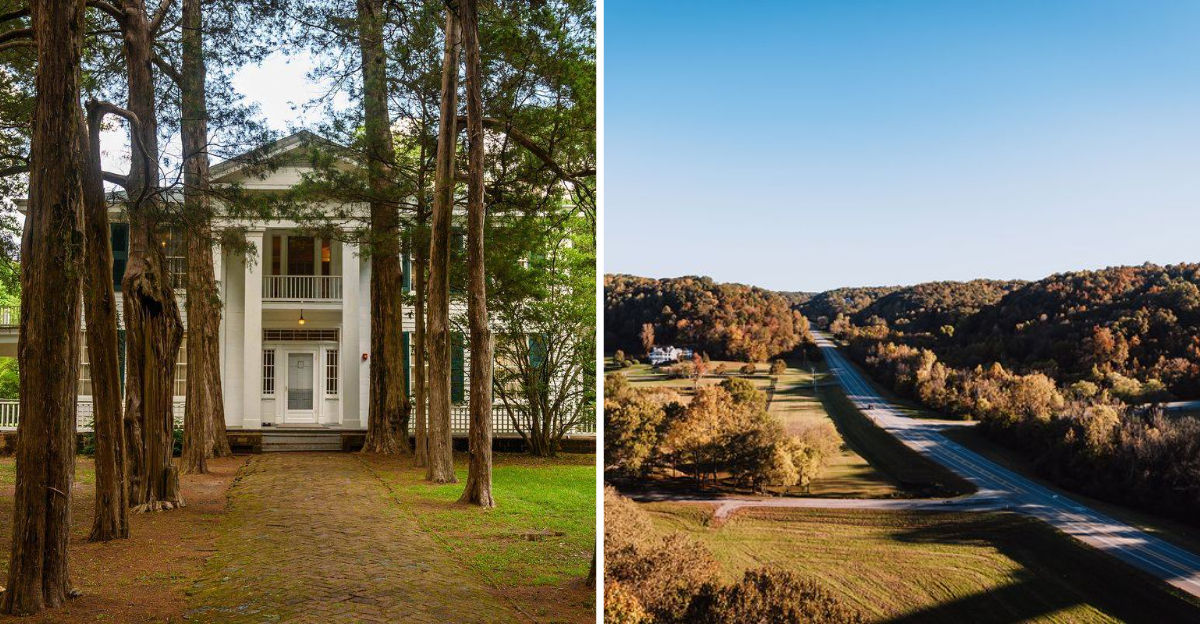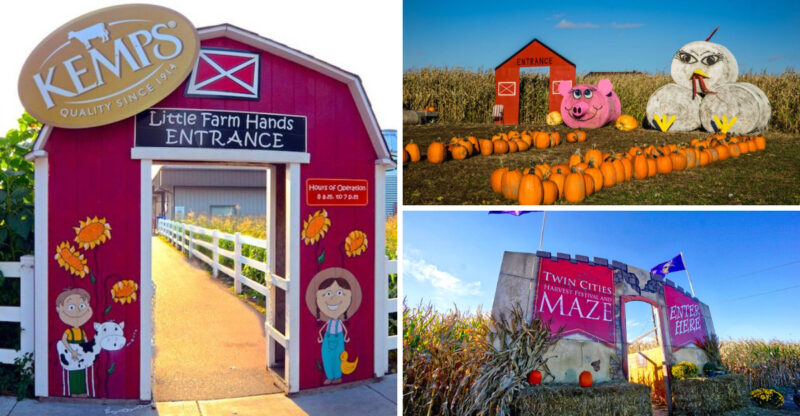Mississippi National Parks Every History Lover Should Visit At Least Once

Mississippi holds some of America’s most compelling historical treasures, where battles shaped the nation and cultures blended to create unique stories.
From Civil War battlefields to antebellum estates, the state offers windows into pivotal moments that changed our country forever.
History buffs will find themselves walking the same grounds where soldiers fought, leaders made decisions, and communities thrived through centuries of change.
1. Vicksburg National Military Park
Walking through these grounds feels like stepping back to 1863, when one of the Civil War’s most crucial battles unfolded here. The park stretches across 1,800 acres filled with monuments, trenches, and restored fortifications that tell the story of the 47-day siege. You’ll see over 1,400 monuments and markers honoring soldiers from both sides of the conflict.
The restored gunboat USS Cairo sits as a centerpiece, giving visitors a rare glimpse of Civil War naval technology. Kids especially love exploring the actual trenches where soldiers once hid during combat.
Rangers offer guided tours that bring the battlefield’s dramatic history to life with stories of bravery and strategy.
2. Natchez National Historical Park
Three distinct sites within this park reveal layers of Natchez’s fascinating past, from Native American settlements to antebellum plantation life. Melrose Estate showcases the wealth and lifestyle of pre-Civil War Mississippi with its pristine Greek Revival mansion and outbuildings. Fort Rosalie marks where French colonists built their stronghold in 1716, forever changing the region’s trajectory.
The William Johnson House tells a remarkable story of a free African American barber who became a successful businessman in the 1800s.
His detailed diary entries provide rare insights into daily life during that complex era. Rangers lead tours that don’t shy away from difficult conversations about slavery and its lasting impact on American society.
3. Gulf Islands National Seashore
Stretching along Mississippi’s coastline, this seashore combines natural beauty with military history dating back to the 1800s. Fort Massachusetts on Ship Island stands as a massive brick fortress built to protect the Gulf Coast during the Civil War. Union forces used this strategic location as a staging ground for attacks on Confederate strongholds throughout the region.
You can take a ferry to explore the fort’s dark corridors and climb atop its walls for stunning ocean views. The beaches here witnessed significant wartime activity, including prisoner exchanges and naval operations.
Beyond history, the park offers swimming, camping, and wildlife watching opportunities that make it perfect for families wanting both education and recreation.
4. Brices Cross Roads National Battlefield Site
Though small in size, this battlefield witnessed one of Confederate General Nathan Bedford Forrest’s most brilliant tactical victories in June 1864. Union forces outnumbered the Confederates significantly, yet Forrest’s cavalry executed a masterful strategy that routed the Federal troops. The battle lasted only one day but had major implications for Union supply lines in Tennessee.
Today, the site features interpretive markers explaining troop movements and battle strategies across the landscape.
It’s one of Mississippi’s quieter historical spots, offering a reflective atmosphere for understanding military tactics. The annual commemoration events bring reenactors who demonstrate what soldiers experienced during this intense summer clash.
5. Tupelo National Battlefield
General Forrest met his match here in July 1864 when Union forces successfully defended against Confederate attacks over two days of fighting. The battle ensured that critical supply lines supporting Sherman’s Atlanta Campaign remained intact and operational. Unlike many battlefields, this compact one-acre site sits right in a residential neighborhood, making history accessible to everyone.
Informational plaques guide visitors through the tactical decisions that shaped the battle’s outcome on these grounds.
The site may be small, but its historical significance looms large in understanding the war’s western theater. Local historians sometimes give talks here, sharing lesser-known stories about the soldiers and civilians affected by the combat.
6. Shiloh National Military Park
Located just across Mississippi’s northern border in Tennessee, Shiloh holds deep connections to Mississippi troops who fought in this massive 1862 battle. The two-day conflict resulted in over 23,000 casualties, shocking both the North and South with its unprecedented violence. Many Mississippi regiments played crucial roles in the Confederate attacks that nearly pushed Union forces into the Tennessee River.
The park preserves the battlefield’s rolling terrain exactly as soldiers saw it during those chaotic April days.
Visitors can follow driving tours that explain each phase of combat through excellent interpretive materials and preserved landmarks. The Corinth Civil War Interpretive Center nearby adds context about Mississippi’s role in the broader western campaign.
7. Corinth Civil War Interpretive Center
Corinth served as a vital railroad junction that both armies desperately wanted to control throughout the war years. This state-of-the-art museum uses interactive exhibits and artifacts to explain why this small Mississippi town became so strategically important. The Battle of Corinth in October 1862 saw fierce street fighting as Confederates tried unsuccessfully to recapture the town.
Exhibits include authentic weapons, uniforms, and personal items recovered from battlefield sites around the area.
The center’s theater presents a compelling film that places visitors right in the middle of the action. Outside, walking trails connect to actual earthworks and fortifications where soldiers once stood guard against enemy attacks.
8. Natchez Trace Parkway
For thousands of years, Native Americans used this path connecting Mississippi to Tennessee before European settlers adopted it as a major trade route. Early 1800s merchants called Kaintucks would float goods down the Mississippi River to Natchez, then walk this trace back north. The journey took weeks and involved dangers from bandits, wild animals, and harsh weather conditions.
Today’s parkway follows the historic route, offering numerous stops at archaeological sites, burial mounds, and preserved trail sections.
You’ll find interpretive signs explaining how different groups used the trace throughout history, from Choctaw and Chickasaw nations to Civil War soldiers. The peaceful drive provides a meditative way to connect with centuries of American travel and commerce.
9. Grand Village of the Natchez Indians
Before Europeans arrived, the Natchez people built a sophisticated society centered at this ceremonial site near present-day Natchez. The village served as their capital, featuring massive earthen mounds where religious and political leaders lived and conducted important rituals. Archaeological evidence suggests the Natchez culture thrived here from around 700 CE until French colonization disrupted their world.
Three preserved mounds still rise from the landscape, giving visitors a sense of the village’s original scale and importance.
The on-site museum displays artifacts excavated from the area, including pottery, tools, and ceremonial objects. Walking trails with interpretive signs explain Natchez social structure, religious beliefs, and the tragic conflicts that eventually scattered the tribe.
10. Winterville Mounds
Between 1000 and 1450 CE, a thriving Native American community built this complex of twelve earthen mounds in the Mississippi Delta. The largest mound towers 55 feet high, representing countless hours of basket-by-basket construction by ancient builders. Archaeologists believe this site served as a major ceremonial and political center for the Plaquemine culture.
The museum houses artifacts that reveal daily life details, from cooking methods to religious practices of the mound builders. Kids enjoy climbing the smaller mounds while imagining the bustling village that once surrounded them.
Rangers explain how climate changes and other factors led to the site’s abandonment centuries before European contact, leaving behind these mysterious monuments.
11. Emerald Mound
Standing eight stories tall and covering nearly eight acres, Emerald Mound ranks as the second-largest ceremonial mound in the United States. Ancestors of the Natchez people constructed this massive earthwork between 1200 and 1730 CE for religious ceremonies and elite residences. The engineering required to build such a structure without modern tools demonstrates remarkable planning and community organization.
Two smaller mounds sit atop the main platform, creating a stepped pyramid effect visible from the Natchez Trace below.
Visitors can climb wooden stairs to the summit for panoramic views of the surrounding countryside. The peaceful setting makes it easy to contemplate the spiritual significance this place held for countless generations of Native Americans.
12. Beauvoir – Jefferson Davis Home
Confederate President Jefferson Davis spent his final years at this graceful estate overlooking the Gulf of Mexico in Biloxi. He wrote his memoirs here while reflecting on the war that tore the nation apart and his role in leading the South. The property includes the main house, a presidential library, and a Confederate cemetery honoring veterans.
Tours provide insight into Davis’s post-war life and the complex legacy of the Confederacy in American memory. The house survived Hurricane Katrina’s devastation in 2005, though many outbuildings required extensive restoration afterward.
Exhibits present Davis’s life story while acknowledging the difficult truths about the cause he championed and its defense of slavery.
13. Rowan Oak – William Faulkner Home
Nobel Prize-winning author William Faulkner purchased this 1840s Greek Revival home in Oxford and made it his creative sanctuary for over 40 years. He wrote many of his greatest novels here, including Absalom, Absalom! and The Reivers, often working in a small office with an outline for A Fable penciled directly on the wall. The house preserves his typewriter, books, and personal belongings exactly as he left them.
Walking through rooms where Faulkner lived and worked gives readers a deeper connection to his complex stories about Mississippi’s history and culture.
The surrounding grounds feature the same ancient cedar trees that inspired settings in his fictional Yoknapatawpha County. Literature enthusiasts consider visiting Rowan Oak essential for understanding the author’s life and creative process.
14. Cottonlandia Museum
Located in Greenwood, this museum tells the complete story of the Mississippi Delta from prehistoric times through the cotton kingdom era. Extensive collections include Native American artifacts spanning thousands of years, Civil War relics, and agricultural equipment that powered the region’s cotton economy. The museum doesn’t romanticize plantation life but honestly addresses slavery’s central role in Delta history.
Exhibits explain how cotton cultivation shaped everything from settlement patterns to social structures in this fertile region.
You’ll see actual cotton processing equipment and learn about the back-breaking labor required to plant, tend, and harvest the crop. The museum also highlights the Delta’s musical heritage, including its crucial role in developing the blues genre.
15. Old Capitol Museum
Mississippi’s government operated from this stunning Greek Revival building in Jackson from 1839 until 1903, witnessing pivotal moments in state and national history. Here, legislators voted to secede from the Union in 1861, setting Mississippi on a path toward Civil War. The building also hosted debates about Reconstruction, civil rights, and countless other issues that shaped Mississippi’s development.
Restoration efforts have returned the building to its 19th-century appearance, complete with period furnishings and legislative chambers. Interactive exhibits allow visitors to explore Mississippi’s political history, including difficult chapters involving segregation and resistance to civil rights.
The museum provides balanced perspectives on controversial topics, encouraging visitors to think critically about the state’s complex past.






